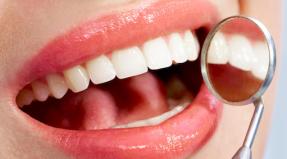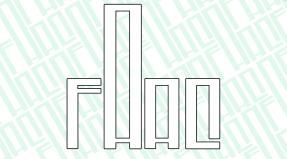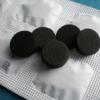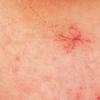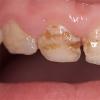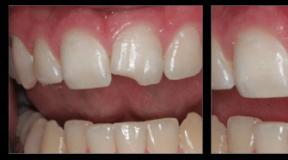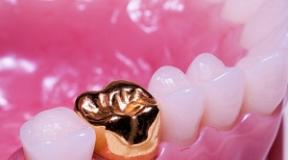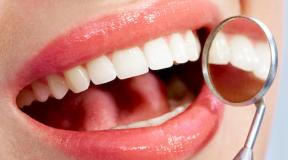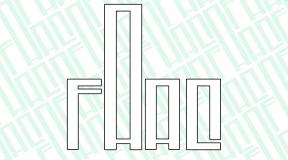In what cases is orthopedic shoes put on a disabled person? Free shoes for children with hallux valgus. Have you taken advantage of this opportunity?
The reasons why we may need orthopedic shoes are different. This may be due to disability or simply some features of the development of the foot. Today we will talk about what orthopedic shoes are, how to choose them correctly and how you can get them for free.
Why you need orthopedic shoes
Orthopedic shoes are a preventive measure. It evenly distributes the load when walking on the entire musculoskeletal system. The lower the load, the better you feel and the less you suffer from the consequences of foot pathology. And the pathology can be very different - from flat feet to very serious deformities not only of the foot, but also of the thigh and lower leg. Orthopedic shoes can correct gait and even have a healing effect.
Varieties of orthopedic shoes
There are three main types of orthopedic shoes:
- preventive - suitable for preventing the development of foot deformity and at the initial stage of the onset of pathology;
- uncomplicated - used at the initial stage of the disease, serves as a means of easy correction;
- complex - necessary for diseases of the musculoskeletal system, with irreversible deformity and with complete or partial amputation.
Uncomplicated and preventive shoes are sold in specialized stores. You can buy a ready-made model if it fits you after trying it on. But complex orthopedic shoes are what is sewn to order in a prosthetic and orthopedic enterprise. Such products should be made on the recommendation of an orthopedic surgeon. The patient's foot is carefully measured and boots and shoes are designed in such a way that, when walking, all the inconveniences caused by the disease are compensated as much as possible.

In addition to medical purposes, orthopedic shoes are divided into children's and adult, home and outdoor, seasonal.
Advice! Orthopedists recommend even in the absence of foot pathology to use shoes with orthopedic insoles, at least for home use. If you regularly wear such insoles, your back will be less tired and flat feet will never develop.
Design features and range of orthopedic shoes
Orthopedic shoes, like ordinary shoes, correspond to the season of wear: they can be sandals and sandals, shoes, boots and boots. The only thing that distinguishes it is not so elegant design, because its main task is to correct imperfections, and not to decorate the foot. To perform their tasks, the boots are equipped with hard backs, a wide stable heel and durable toes. The design may include various kinds of inserts and special plates, additional mounts and straps. Sophisticated orthopedic shoes resemble a corset for the leg: it is tightly fixed and does not give the foot freedom.

In no case should you buy or order orthopedic shoes without the recommendation of an orthopedic doctor. It's like a medicine that, if misused, can cause irreparable harm.
How to choose the right orthopedic shoes
An important point: ortho shoes are made only from natural materials. For her use leather, suede or fabric. Given the tight fit of the product on the foot, it is very important that the foot breathes, and the material stretches comfortably along its contour. Of course, shoes and boots should be in size. You should not take such shoes to a child “with a margin” - this can seriously harm his health.
For your information! Orthopedic insoles in the process of wearing acquire a specific shape corresponding to the leg. For this reason, you can not wear such shoes for someone.
For children, medical boots must be made with a heel, at least a small one. Platform shoes are strictly not recommended for orthopedic purposes. If you choose simple shoes, pay attention to the quality of the heel counter: it should be protected by soft leather or fabric lining and devoid of seams. The clasp on such shoes tightly fixes the leg above the ankle. If the fastener ends below, the leg will not be fixed in the desired position. The sole of the shoes is made of durable, non-slip material.

Basic rules for buying orthopedic shoes:
- Take out the insole and attach it to the sole of the foot, it should exactly match your size, no more, no less.
- Try on both shoes and walk around the gym in them for at least 10 minutes. Try how well the sole bends and the foot is fixed, whether the heel presses.
- Never buy orthopedic shoes if they are uncomfortable for you. Such products cannot be broken in.
- Ignore the decorative trim. These are shoes for healing, not beauty.
- Do not buy shoes without first consulting with an orthopedic doctor.
Important! If you want to make sure that the product you have chosen is indeed orthopedic, ask the seller for a certificate.
How much do orthopedic shoes cost and how can I get them for free
Proper orthopedic shoes in any case are more expensive than usual. Except, of course, some branded products. The reason for the high cost is the use of natural materials and the special design of boots or shoes. Low-complexity models may vary slightly in cost depending on the manufacturer. The most expensive are imported copies. On average, children's uncomplicated shoes cost about 3-5 thousand rubles per pair (at autumn 2018 prices). Sophisticated shoes are made to order by licensed specialists, so the cost of the products corresponds to the effort expended. The price of custom-made boots starts from 8 thousand rubles.

Is there any way to reduce these costs? First of all - do not try to save on shoes, you will only make things worse for yourself. And the second point - you can even get it for free! If a person has really serious problems with the musculoskeletal system and shoes are recommended to him by an orthopedist, the state is obliged to provide the disabled person free of charge. What is needed for this:
- when drawing up an individual rehabilitation program, you should present the recommendations of the orthopedist to the commission and make sure that the shoes are entered on the card;
- apply to the body responsible for providing disabled people with means of rehabilitation with a statement. Depending on the region, this may be the local department of social protection or the social insurance fund;
- get a referral for the manufacture of shoes and contact the supplier with whom a state contract has been concluded for the manufacture of products. If there is no contract or the quality of shoes under the state order does not suit you, you can order the products yourself, pay for them and receive compensation. How to determine the amount of compensation, read.
For your information! Families with many children can apply to the social protection authorities for help in purchasing ortho shoes for children. It is possible to get a 50 percent discount.
The free provision of orthopedic shoes has limitations: children are allowed no more than 4 pairs per year (2-year-old, 2-winter), adults - no more than 2.
Who should not wear orthopedic shoes
Ortho shoes have contraindications. There are few of them: these are purulent diseases of the skin of the feet, allergic reactions to materials and senile age-related changes in the musculoskeletal system.
You may be interested in these materials:
Documents for compensation of IPR FSS are issued (certificate with a seal, cash receipt, sales receipt with a seal, receipt with a seal)
- at the place of purchase in ORTHOMINI retail stores
- are included in the package upon shipment.
- sent by registered mail
Formulations for FSS compensation are filled in according to the IPR card
According to the current legislation of the Russian Federation all categories of disabled people, with an Individual Rehabilitation Program (IPR card), have the right to free provision of technical rehabilitation equipment and prosthetic and orthopedic products that meet their special needs, increase their level of independence in everyday life.
What items can be reimbursed?
- Canes, crutches, walkers
- Wheelchairs
- Orthopedic children's shoes
- Adult orthopedic shoes
- Orthopedic products for joints (Bandages, orthoses, splints)
- Orthopedic products for the spine (posture corrector, corsets, Shants collar)
- Anti-hernia and postoperative bandages
- Orthopedic insoles and devices for the foot
What needs to be done to receive compensation in the state bodies for IPR?
1. Contact the medical institution at the place of residence to complete the form
088u-06 "Referral for medical and social examination by an organization providing medical and preventive care."
Form 088у-06 is valid for 1 month from the date of issue.
2. Contact the medical and social expertise service at the place of residence to establish a disability group and develop an individual rehabilitation program (IPR).
Children under 18 are prescribed on the IPR card from 2 to 4 pairs of orthopedic shoes (complex orthopedic or uncomplicated orthopedic shoes) per year (2 pairs with a warm lining and 2 pairs without a warm lining).
Adults are compensated up to 2 pairs per year.
3. Find out the amount of possible compensation for self-purchase using an IPR card at the FSS authorities at the place of registration.
 |
Dear buyers! Everyone in need, simply on the basis of a medical report, can receive monetary compensation from the state for orthopedic products, orthopedic shoes, orthopedic insoles, by contacting the department for providing social support measures of the Department of Social Policy or the MFC at the place of residence (except for dental and eye prostheses) No age limit! Find out, enjoy your benefits! There is such a decree in every region of Russia, every region and city! |
Department of social protection of the population
Social protection of the Sverdlovsk region and Yekaterinburg (Decree of the Government of the Sverdlovsk region of April 20, 2016 N 273-PP.
Compensation for expenses associated with the purchase of prosthetic and orthopedic products for non-disabled people (except for dental and eye prostheses) (we type such a request with the title in the search engine)
It is provided to citizens living in the Sverdlovsk region (any region, any region, city, settlement), who do not have a disability group, but for medical reasons, who need prosthetic and orthopedic products.
Documents required for registration of compensation (no age limit)
- Passports of adult family members (original and copy of full name pages, registration)
- Medical report confirming the existence of medical indications for the provision of prosthetic and orthopedic products
- Documents confirming the payment of the cost of the prosthetic and orthopedic product (receipt cash order, cash and sales receipts indicating the name of the prosthetic and orthopedic product, its type and model, and the date of purchase).
- Child's birth certificate (original and copy)
- Certificate from the place of residence on the composition of the family (valid for 10 days)
- Certificate of divorce, Certificate of paternity - for single-parent families (original and copy)
- Marriage certificate, in case of different surnames (original and copy)
- Documents (certificates) confirming the income of each member of the citizen's family for the three calendar months preceding the month in which the application for compensation was submitted
- Consent of adult family members to the processing of personal data
- Bank account details
- SNILS
- Certificate from the Pension Fund confirming the absence of disability
Orthopedic shoes are classified in heading 9021 of the TN VED CU (Commodity Nomenclature for Foreign Economic Activity of the Customs Union) if the following conditions are simultaneously met:
- orthopedic shoes must be custom-made to fit the shape of the deformed foot, orthopedic shoes are never mass-produced;
- these shoes must be made mainly of hard leather, which can be reinforced with a metal or cork frame, giving rigidity to the shoe to correct leg (foot) deformity;
- the upper of the shoe may not consist entirely of straps or bands;
Orthopedic shoes are designed to correct permanent or temporary deformities of the foot or to relieve pain when walking.
Mass-produced footwear with an insole that is curved to relieve pain from flat feet is classified according to the material of the upper and sole and the method of manufacture in HS Chapter 64.
Source:
Order of the Federal Customs Service of Russia dated 01.03.2012 N 34-r
"On the classification according to the TN VED CU of certain goods"
(Registered in the Ministry of Justice of Russia on April 28, 2012 N 24001)
TMR (including orthopedic shoes) are included in the IPR at the expense of the Social Insurance Fund ONLY for pathology leading to OD.
In other cases, it is possible to include TSR in the IPR (including orthopedic shoes), but in this case, the column "Contractor" indicates: "The disabled person himself" or "At the expense of the disabled person."
I inform you about the possibility of including technical means of rehabilitation (TCP) in the individual program for the rehabilitation of a disabled person (IPR) at the expense of the Social Insurance Fund of the Russian Federation for comorbidity, that in accordance with Article 11.1, the decision to provide disabled people with TCP is made based on the results of an examination at the medical bureau social expertise:
"According to medical indications, it is necessary to provide a disabled person with technical means of rehabilitation that provide compensation or the elimination of persistent restrictions on the life of a disabled person."
According to clause 1 of the “Procedure for the development and implementation of an individual program for the rehabilitation of a disabled person (disabled child)”, approved, the development of an IPR is carried out during a medical and social examination based on an assessment of disability caused by a persistent disorder of body functions, and rehabilitation potential.
An assessment of the nature and degree of impaired body functions and possible limitations of life activity is carried out using the “Classifications and criteria used in the implementation of medical and social examination of citizens by federal state institutions of medical and social examination”, approved (Classifications).
Determination of the degree of impaired functions, in accordance with paragraph 4 of the Classification, is carried out in a complex manner, i.e. with an assessment of all the parameters characterizing them.
Thus, TCPs are recommended for the purpose of compensating or eliminating persistent disability caused by persistent disorders of bodily functions. In those cases when, according to the results of a medical and social examination, violations of the functions of the body, including comorbidities, do not lead to restrictions on life, there are no grounds for establishing disability.
Therefore, there are no legal grounds for inclusion in the IPR of TCP for pathology that does not lead to disability.
To include a disabled person with orthopedic shoes in the IPR, it is required to attach the conclusion of the medical and technical commission (act of the MTC), which is drawn up by orthopedic prosthetists of the medical departments of prosthetic and orthopedic enterprises, to the Referral to the ITU in the form 0-88 / y.
A referral for a consultation to a prosthetic and orthopedic enterprise in order to obtain this conclusion is usually issued to a patient with an OOLPP, which issues him a Referral to the ITU in the form 0-88 / y.
Less often, patients turn to prosthetic and orthopedic enterprises on their own and receive an act of the Ministry of Transport and Trade about their need for orthopedic shoes.
Both in the first and in the second cases - in the Referral to the ITU in the form 0-88 / at, the OOLPP must indicate the need for the patient to provide him with orthopedic shoes.
Medical indications for providing disabled people with orthopedic shoes:
Persistent, moderately pronounced and severe disturbances of the statodynamic function leading to OZD in the category of independent movement (this is a mandatory condition) due to diseases, consequences of injuries, deformities of the feet: static insufficiency of the feet with severe anatomical manifestations; shortening of the limb length over 30 mm; congenital and amputation defects of the feet; paralytic foot deformities; congenital deformities (equino-varus deformity (clubfoot), equinus (horse) foot, flat-valgus foot, etc.); residual deformities after foot injuries; ankylosis of the ankle joint; lymphostasis (elephantiasis) and acromegaly; use of fixation devices and splints, diabetic foot syndrome.
Orthopedic shoes do not fit into the IPR (and are not manufactured) for patients with foot deformities, but suffering from severe concomitant diseases that exclude the possibility of walking in orthopedic shoes.
Absolute medical contraindications to providing disabled people with orthopedic shoes:
Extensive trophic ulcers of the foot, gangrene, widespread purulent processes in soft tissues, lack of support ability of the lower limb due to extensive cicatricial changes in the tissue prone to ulceration, senile people with severe general decrepitude and inability to move.
Allergic reactions to orthopedic products materials.
Hi all!
I accidentally stumbled across the Internet on the information that children under 16 can receive compensation for purchased orthopedic shoes at their own expense. The amount of compensation, as I understand it, is about 2 thousand rubles.
Or you need to collect documents and stand in line for individually sewn shoes at special enterprises.
The only nuance is that this order refers to the disabled, they are entitled to 4 pairs per year, and children who are not disabled are entitled to 2 pairs per year.
Order of the Ministry of Social Security No. 35 dated 15-02-1991
"On approval of instructions on the procedure for providing the population with prosthetic and orthopedic products, vehicles and means of ensuring the life of a disabled person"
Section 2 states that children under 16 years of age are entitled to free provision of complex orthopedic shoes.
Here is what one of the forums says:
"2 pairs of orthopedic shoes per year are given to all children who need them on the basis of a certificate from an orthopedist in accordance with the Decree of the Government of the Sverdlovsk Region dated February 28, 2005 No. 140-PP ON PROVISION OF CERTAIN CATEGORIES OF CITIZENS LIVING IN THE SVERDLOVSK REGION WITH PROSTHETIC AND ORTHOPEDIC PRODUCTS
Bring a certificate from the orthopedist that you need orthopedic shoes. This must be done at the end of the year.
We receive 2 pairs of shoes at the end of August and immediately apply for the next year
There is a law of the government of the Sverdlovsk region that any child who needs complex orthopedic shoes should be given 2 pairs a year on the basis of a certificate
Look for this law on the Internet and bring it to them, I know they also give it out in Ekb, a relative received it from me last December for my daughter
compensation is also prescribed in the law, but it is not given"
http://www.babyblog.ru/community/post/perambulator/3056855
http://otzovik.com/review_569609.html
https://vk.com/topic-20515305_25528847
http://www.u-mama.ru/forum/kids/special-child/447141/index.html
http://otzovik.com/review_2111742.html
Tell me, please, who came across how the cost of orthopedic shoes is reimbursed?
I am also interested in the option of buying ready-made shoes at my own expense, then reimbursement of it and getting shoes sewn individually for the child ...
I did everything as it says:
1)We went to the clinic, got a certificate from the orthopedist"The diagnosis is flat-valgus deformity of the feet, of a pronounced degree. The certificate states that for health reasons, for further rehabilitation and care, it is necessary to manufacture complex orthopedic shoes, namely, children's / school shoes with arch support and low (high) lateral support."
We were also given a referral to a prosthetic and orthopedic enterprise that needs to manufacture complex orthopedic shoes.
Although we are not disabled, there are a lot of orthopedic problems, and it’s impossible without orthopedic shoes, but oh, how expensive it has become ((((Especially since the youngest also needs orthopedic shoes ((
2) Then the fun begins. The orthopedist gave all the information, but about Commission ITU, which must be passed in order to get an IPR(an individual rehabilitation program, ordinary children also read it) and does not know. I sent him to the polyclinic to another uncle who provides for the disabled, he also said that it makes no sense for us to go to this commission, there IPR is issued only to disabled people. Sent to find out everything in the social. protection
3) We called the orthopedist. company. They said that they make individual shoes either in the direction of social security, or for a fee, then it will cost about 8 (!!!) thousand rubles. rub. And orders will begin to accept from October.
4) We called the Social Insurance Fund of the Russian Federation, Sverdlovsk regional branch on Aivazovsky, 53
They didn’t talk much there, they said that they ONLY work with the disabled and with no one else, call somewhere else and find out there
5) I read that they still issue compensation through MFC.
I called the MFC - a multifunctional center for the provision of state and municipal services in the Sverdlovsk region. They said that they did not know anything about it, they sent me to call the Municipal Multifunctional Center. They said that they don’t know anything about such compensation either, they don’t work with her ...
And what can be done, somehow mothers receive these compensations ...
As an option, write to the FSS website, where else?
According to the legislation of our country, children who need corrective shoes are entitled to free orthopedic shoes. Didn't know about it? Then our article will clarify all the questions you need to know about this. To begin with, let's figure it out: what are orthopedic shoes for and what is so special about them?
Orthopedic shoes: what is it for and why?
Orthopedic shoes are specially designed for the treatment, correction and prevention of flat feet, posture and gait disorders. It has many advantages over conventional ones: special orthopedic shoes have a design that serves to correct developing foot disorders, sanitary and hygienic requirements are taken into account during production, it is possible to custom-make according to your personal parameters and indications of an orthopedist.
But the main advantage is the preservation of your health and the health of your children, because no medications and exercises can properly form the feet and achieve the correct gait and posture.
Everyone can provide at least a pair of orthopedic shoes, however, not everyone knows about it.
Get free orthopedic shoes
According to the legislation of our country, for a child under 16 years of age, you can get 2 pairs of free orthopedic shoes (summer and winter, respectively) once a year; free insoles in the amount of 1 pair once every six months; disabled children - 4 pairs of free orthopedic shoes per year.
1) The first thing you need is to make an appointment with an orthopedist. The doctor will perform an examination, checking the feet, posture, perhaps he will direct you to take an x-ray. If there are deviations, he will write out a direction for the manufacture of orthopedic products.
2) Next, you need to find out if you are eligible for free production of orthopedic products. To do this, you need to contact the Department of Social Protection of the Population. They determine the right to free receipt on the basis of the following documents: certificates from a hospital or clinic with a diagnosis and a doctor's opinion, a civil passport, as well as documents confirming the benefit (pension certificate, mother of many children, and others). The right to free provision of orthopedic shoes has:
- disabled people;
- large families (three or more children in a family);
- socially unprotected segments of the population (people whose income does not reach the subsistence level);
- children who need foot correction.
3) After the Department of Social Security issues you a certificate stating that you can get orthopedic products for free, you can safely go to any orthopedic salon or orthopedic center where they are made, and it’s even easier to place an order directly from the manufacturer. Of course, you need to contact one that works officially and can provide you with the relevant documents (receipt, invoice). They indicate the name of the organization, legal address, type of services that you were provided. Reporting documents must bear the seal of the organization.
4) In the orthopedic salon or orthopedic center of your choice, shoes are made for you according to the indicated recommendations of the orthopedic doctor. They don’t give it for free - you pay it yourself, but you receive compensation from the Social Security Administration, subject to the provision of the above papers.
5) There is another very important point - compensation is reimbursed, but there is a limit: a certain amount, more than which you will not be paid. So it is necessary to take this fact into account when choosing shoes in an orthopedic salon.
6) One more thing - only children who need correction are entitled to free shoes, so if you want to get them for prevention for free, you will not succeed, since the testimony of an orthopedist is needed that the baby needs treatment and claims a free pair of shoes.

It is possible that the procedure for obtaining free orthopedic shoes may differ from that described in this article, so we recommend that you ask your Social Security Administration and health care institutions directly how free orthopedic shoes are provided in your locality.

